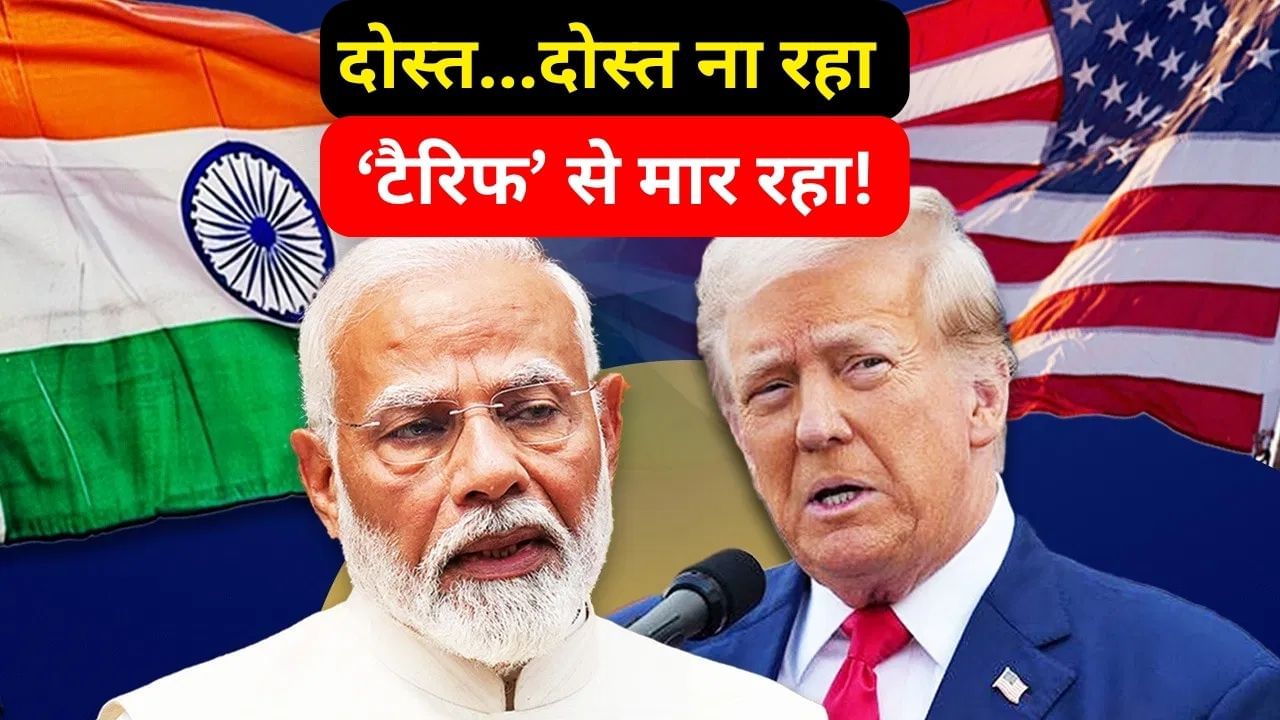6 Das of Dash came to the Sangam film starring Raj Kapoor, Rajendra Kumar and Vyjayanti Mala. A song on the climax of this film was filmed on these three. Whose lyrics were there, friend… friend is not there… This classic song is also very famous even in the present time. At the same time, after the friendship of the current Trump and Modi and 25 percent tariffs, they are sitting completely suitable. Trump and Modi’s friendship is not hidden from any country in the world. When Trump took power again, not only the country but in the world, everyone felt that with the help of Trump, India will now be a shining star in the world’s economy and would become an alternative to China. But what did anyone know that India would also become a big victim of American tariffs.
Trump has imposed a 25 percent tariff on India. The special thing is that 25 percent of the tariff is recently more than the tariff deal with the rest of the US. Japan has 15 percent tariff. While a 20 percent tariff has been imposed on Vietnam. On the other hand, Indonesia has a 19 percent tariff. At the same time, a tariff of 15 percent has been imposed by the US while doing a trade deal with Europe. There was a report in the month of March. The pages of that report need to be overturned once again. That was because in that report it was estimated that if India is targeted, then the country could lose 7 billion dollars. Let us also tell you what was said in that report?
How much can there be losses
In the month of March, the report of City Research estimated that Trump’s threat to install resipochl tariffs is raising concern from automobiles to agriculture in India’s export sector. City Research analysts estimate that the potential loss will be around $ 7 billion annually about 61 thousand crores. City Research analysts say that the most damage will be Camery tomorrow, metal products and jewelery, followed by automobiles, medicines and food products. In 2024, India’s business exports to the US are estimated to be around $ 74 billion.
Which includes pearls, gems and jewelery worth $ 8.5 billion, medicines worth $ 8 billion and petrochemical worth about $ 4 billion. Overall, India imposed a weighted average tariff of about 11 per cent in 2023, which is about 8.2 per cent higher than the US tariff on Indian exports. On the other hand, India Ratings and Research (Ind-Ra) also said that if the tariff is applied to India, then in FY 2026, India’s exports to America can be reduced from $ 2 billion to $ 7 billion.
25 percent tariff on India
US President Donald Trump has announced a 25 percent fee on India from August 1, following some deadlock signs in a conversation between the two countries on the bilateral trade agreement (BTA). Trump cited India’s high fee behind his decision, the purchase of most military equipment and energy from Russia as well as non-monetary trade obstacles. Trump said that India will have to pay 25 percent fee and fine from August 1.
He further said that our trade deficit with India is very high. However, the US President described India as his friend in social media posts. He said that India is our friend, but we have done relatively less trade with them in the last several years, because their charges are very high, which are the most in the world. They have the most rigorous and unpleasant non-modern business obstacles.
Trump said, everything is not good
He said that apart from this, he has always bought a large part of his military equipment from Russia, and is Russia’s biggest buyer with China, while everyone wants Russia to stop murders in Ukraine. The US President said that everything is not right! Therefore, India will have to pay 25 percent fee from August 1 and a fine for purchase from Russia. There is no response from India at the time of Trump’s announcement.
An American team is going to visit India next month for the next round of talks on the proposed bilateral trade agreement. India and America teams have completed the fifth round of talks on the agreement in Washington last week. Rajesh Aggarwal, the chief negotiator of India and Special Secretary in the Department of Commerce and Brandon Lynch, assistant American trade representative for South and Central Asia, held discussions.
